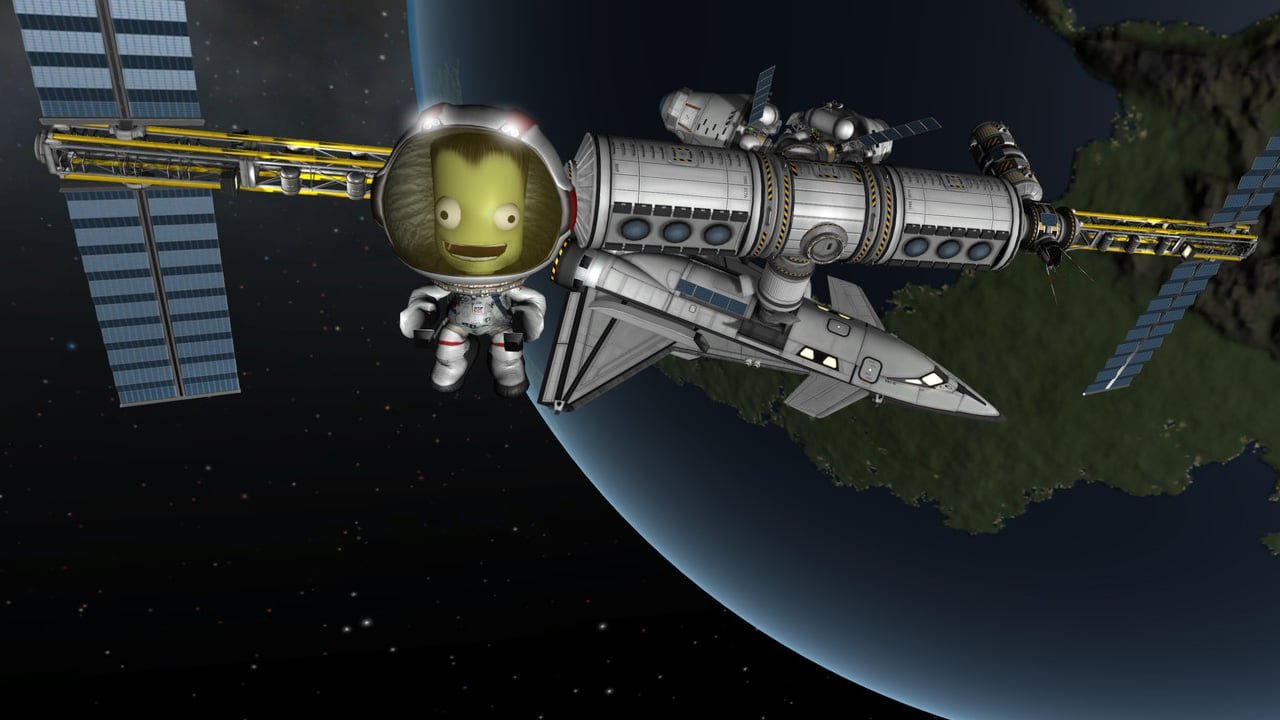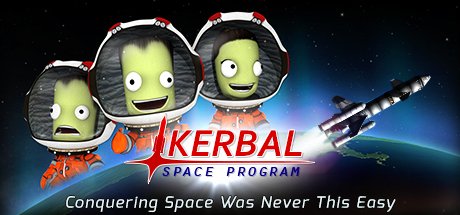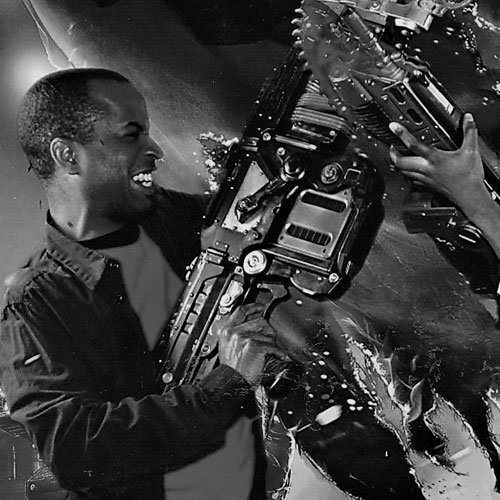Do you ever wonder why people still use that tired old phrase “It’s not rocket science” when they’re trying to explain that something is simple to understand? Well, the short answer is that it’s completely relevant today: rocket science is hard. Really hard. It will probably still be hard for most regular human beings to wrap their heads around even 50 years from now. So it’s understandable that the majority of videogames that involve space travel tend to gloss over its most rudimentary aspects in the interest of fun; after all, who wants to be held back from kicking ass and exploring the galaxy as Commander Sheppard in Mass Effect when they don’t know how to execute a proper lift-off sequence from the surface of a planet? Kerbal Space Program dares to be different, however.
Originally launched in 2011 by indie developer Squad, Kerbal Space Program (KSP) charges players with spearheading a fledgling space program not unlike NASA on a planet not unlike Earth, except that this planet is called Kerbin and is inhabited by an oddly cute race of green humanoids called Kerbals. While the main thrust of the game would appear to be primarily about building rockets and other vehicles capable of space flight and launching them into the perilous and unforgiving vacuum of the cosmos, the game actually promises a rather impressive and well-rounded simulation of a real-life space program. Players can ultimately venture to the “Mun” and other celestial bodies in the solar system, land on their surfaces and explore them with lunar rovers that they’ve built, construct orbital space stations and conduct scientific “experiments” in order to earn financial grants and support further research.
Every KSP success also increases the experience of one’s crew of astronauts and allows for further expansion of the team, or at the very least the ability to replace the ones who are killed in the many failed launches, landings and other misadventures that players will certainly be witness to as their creations are tested against convincing simulations of real-world physics and structural engineering. I particularly enjoyed observing my skills in rocket-building stumble progressively upward as I gradually evolved from explosive, catastrophic failures and tragic Kerbal casualties to longer and longer periods in flight and ultimately reaching orbit for the first time. What’s regrettable however is that after spending several weeknights with this PS4 port of this very popular indie game, I have a very strong feeling that few players that give it a try on console if any will ever get far beyond that point.

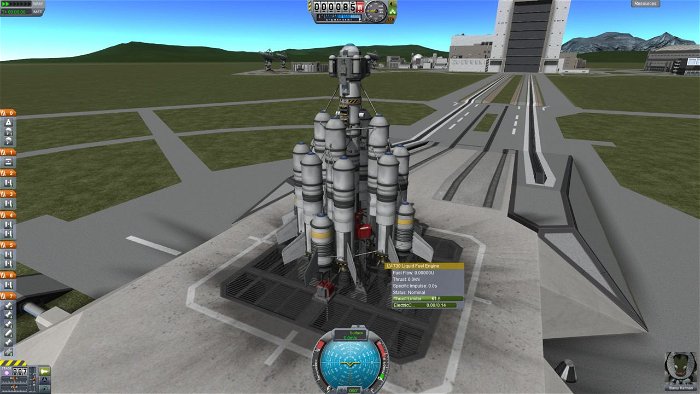
For starters, one of KSP’s most admirable qualities is also one of the aspects of the game that nearly drove me away after playing it for only a couple of hours—it’s so assured that everyone who plays it is already a part of its core audience that it makes little to no attempt to appeal to anyone that’s not fully on board with the rocket science stuff. I consider myself to be a smart person, and I found it refreshing that the Kerbal scientists, engineers and astronauts that you encounter both in the tutorial and the game proper come across as truly scientific thinkers that address you more like a peer rather than a total beginner to space travel, but after having to read though what felt like pages and pages of text explaining all the features of the Kerbal Space Center, how to build a rocket and then how to launch it, I felt like I was reading a forklift operation manual from cover to cover and falling asleep.
To make things worse, nothing in the Tutorial mode carries over to the Sandbox, Science or Career Modes of the game, including the basic rocket you’re forced to build, but at the same time, leaping straight into one of the latter modes will skip vital tips and make learning how to play the game more difficult. In other words, KSP is a game that demands several hours of your time learning how to play it before you even begin to play it in earnest, and much of that learning will be spent reading lots of instructions and deciphering all the different buttons in the game’s various HUDs, rather than doing the actual thing you are learning about.
If the steep learning curve and drab, bookish nature of the KSP aren’t enough to give some players pause, the bargain-basement visuals definitely will. KSP has had a long time to percolate, having spent the past five years on PC in various forms of beta states and early access on Steam, and has been out in official release since April of 2015, so it’s reasonable to expect by now that a console version in 2016 would reap the performance benefits of all that development. Instead, players that shell out the $40 to play KSP on PS4 can expect to be greeted by a visually unimpressive, woefully under-optimized product. Don’t get me wrong, I’ve seen KSP on PC and the game has never really been much of a looker, but on PS4 the game manages to hit such new lows in presentation that I was transported back to the dark days of playing polygonal relics like Hard Drivin’ and F22 Interceptor…not on a PC, but on the Sega Genesis. Flat, bland textures abound and are often not present at all, especially at times when the camera is pulled far, far out from the facility and the mountain horizon is visible. In fact, most of the time it appears as though the game simply cannot handle the number of polygons being displayed on screen, even though there appears to be barely anything on-screen to render.
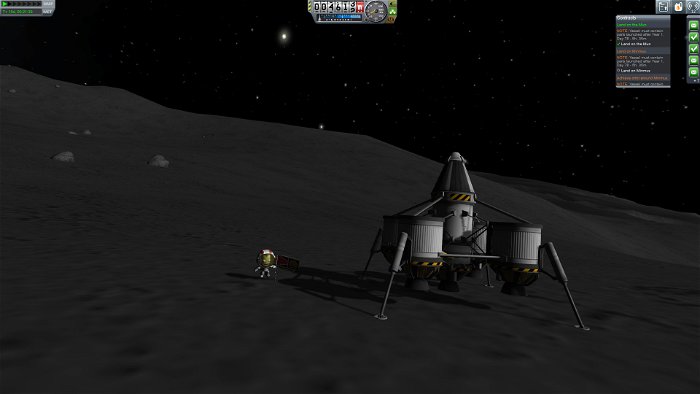
Every time I visited the launch pad to test out my newly-constructed rocket, the first few seconds of loading up the sequence consistently greeted me with choppy framerates and horrendous draw-in. These same issues kept reappearing at just about any moment that should have elicited genuine feelings of awe, triumph, or terror, often sucking much of the magic out of the proceedings. For example, when Hunk O’ Junk Two, my first space-worthy and structurally-sound rocket finally broke free of Kerbin’s gravitational pull and achieved orbit, the firmament of stars and appropriate background music unceremoniously popped in, as if the game had suddenly woken up and remembered they were supposed to be there. And upon re-entry, the near-textureless, feature-devoid terrain made for a rather underwhelming touchdown (except for the times when I crashed into it and blew up). KSP is easily the worst looking, worst running game I’ve yet to play on PS4, and also has one of the longest initial loading sequences of this generation.
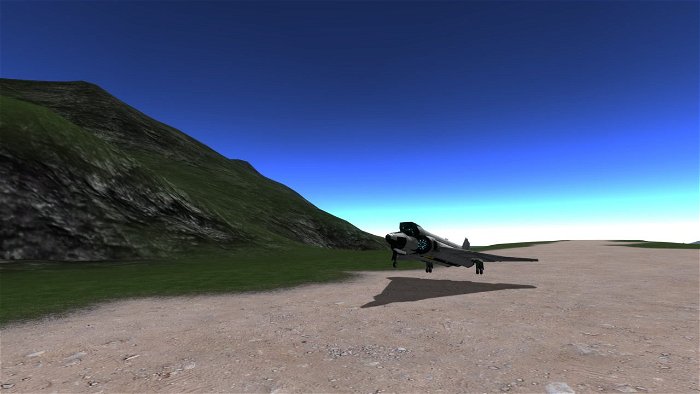
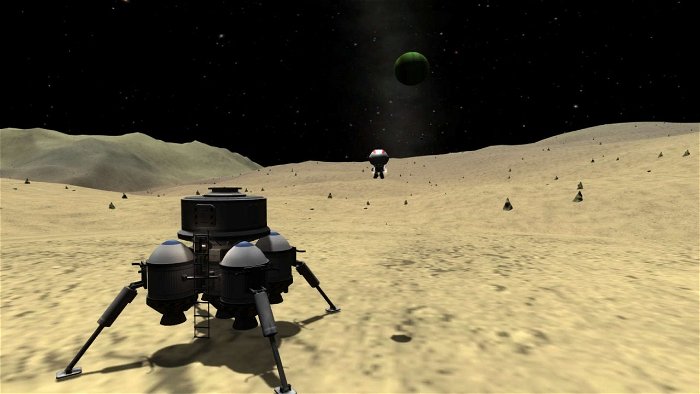
Finally, KSP’s visual interface is a cluttered, steaming hot mess, cursed with a sluggish, unwieldly control scheme and an equally atrocious game camera. The various HUDs in the game are almost always cluttered with buttons, dials, drop-down menus and even pop-up instruction manuals that expand to fill the screen, obstructing one’s view of the game in the process. This is especially true in Construction Mode, which is arguably the area of the game where players are meant spend the most time and derive much of their overall enjoyment. During tutorials, character text bubbles actually appear on the screen as opaque windows that players must use a cursor to click-and-drag aside just so they can continue to read the text while observing what that those instructions are referring to.
For some reason, the DualShock 4’s Sixaxis feature is enabled by default to move the cursor as well, perhaps to allow minute movements when manipulating objects in the construction bay, but in practice it only creates less accuracy and more irritation. Button symbols are vague, ship parts and components are so numerous that players must use a built-in search engine to find them, and the act of selecting, manipulating and connecting ship parts together is a nightmare thanks to a sticky, non-intuitive assembly system and a camera that fights you every step of the way and never provides the right angle. By the time I managed to build a spacecraft capable of reaching a stable orbit, I had already reached my last nerve with the game and ended my quest for the stars then and there.
It may be one of the critical darlings of today’s indie game scene, but on PS4, Kerbal Space Program is a lazy shoehorning of the PC title onto a console with next to no regard as to how it should look, play or control on that platform. In short, if you must play this game, purchase it on PC where it can be played with a mouse and keyboard, higher resolution and wider, less cluttered field of view, as the developer originally intended. Console players deserve far better than this.
